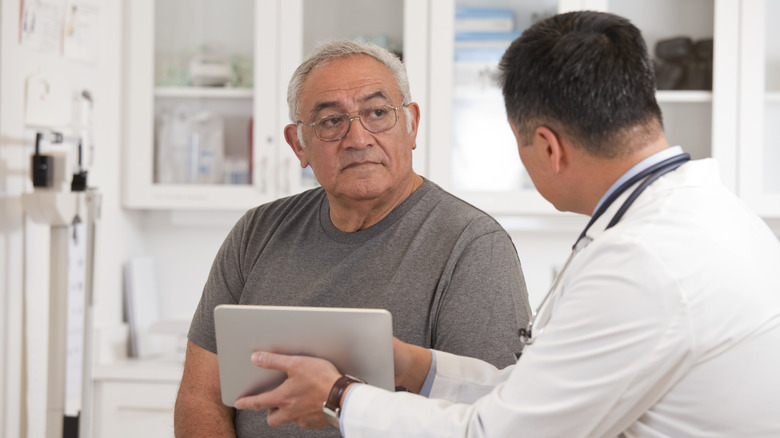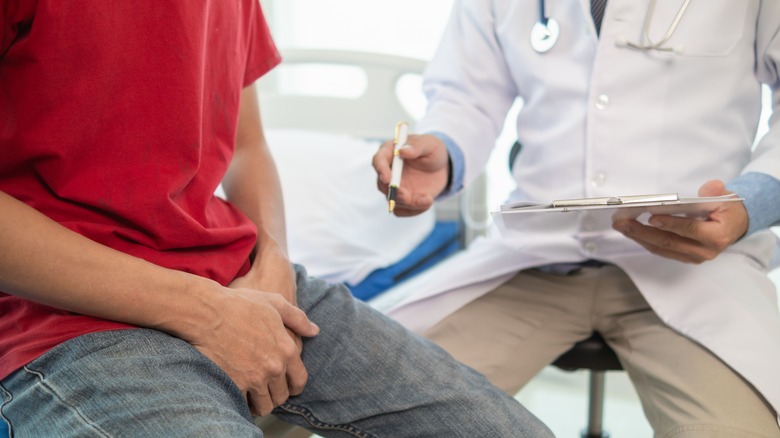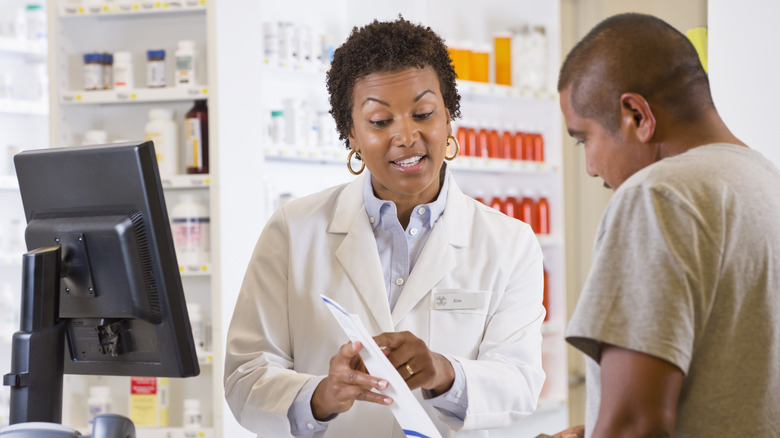What Happens When Chlamydia Spreads To A Man's Prostate
With approximately 1.5 million cases reported annually, chlamydia is among the most common sexually transmitted infections (STIs), reports the Cleveland Clinic. Because the bacterial infection doesn't always present with symptoms, prevalence rates are suspected to be higher, with Planned Parenthood reporting as many as 3 million people in the U.S. being affected by chlamydia each year. A Chlamydia trachomatis infection can cause complications without proper antibiotic treatment. Although rare, this can include the development of prostatitis for people with prostates in the event that the bacteria makes its way to the reproductive gland (per Mayo Clinic).
Characterized by prostate inflammation, prostatitis symptoms may include dysuria, lower back pain, fever, chills, and pain during or following sexual intercourse. In a 2017 study published in Investigative and Clinical Urology, researchers looked at the role Chlamydia trachomatis (CT) played in cases of chronic bacterial prostatitis (CBP) compared to other common uropathogens. It was found that CBP cases related to Chlamydia trachomatis were associated with increased frequency of symptom recurrence and greater impacts on quality of life than cases caused by other pathogens of the urinary tract.
How chlamydia can affect the prostate gland
If Chlamydia trachomatis were to spread to the prostate and prompt inflammation, the gland may not be able to function properly, potentially affecting male fertility, according to a 2014 scientific review published in Frontiers in Immunology. While some studies have suggested that chronic prostatitis from Chlamydia trachomatis infection may produce changes in semen quality, other studies have found no such connection.
Taking preventative measures to reduce one's risk for chlamydia can help protect against a related prostate gland infection. The bacteria is predominantly spread through the exchange of vaginal fluids, semen, and pre-ejaculate during oral, vaginal, and anal sex (via Cleveland Clinic). Chlamydia can be spread through direct contact of the hand to the eye or the sharing of sex toys — although this is a less common method of transfer. Using protection, such as condoms, and thoroughly cleaning any shared sex toys can help lower one's risk for chlamydia. It's important to note that the bacteria cannot be contracted through hand-holding, kissing, sneezing, or other forms of casual contact. Increased public access to sex education and healthcare resources are also factors that can reduce high STI infection rates in vulnerable communities.
Symptom detection and treatment of chlamydia
Chlamydia goes undetected in approximately 50% to 70% of people with the infection due to a lack of symptoms (via Cleveland Clinic). If symptoms do emerge, it is often not for several weeks and, sometimes, even years. In men and people assigned male at birth, signs may include the presence of a phlegmy discharge from the penis or feelings of discomfort and burning while peeing. Pain, discharge, or bleeding from the anus can also be potential indicators of chlamydia.
Routine STI testing can help ensure an infection does not go untreated. Treatment usually involves taking antibiotics for seven to 14 days and undergoing any follow-up care suggested by your doctor. During this time, patients are advised to abstain from sexual activity for at least a week to protect against re-infection. Patients are also encouraged to inform all recent sexual partners of the infection. Although there is presently no vaccine available for chlamydia and the research still has a long way to go, recent findings of early clinical trials show potentially promising results, per NBC News.


